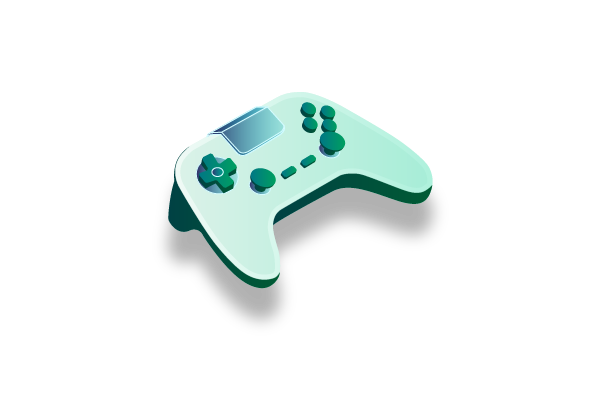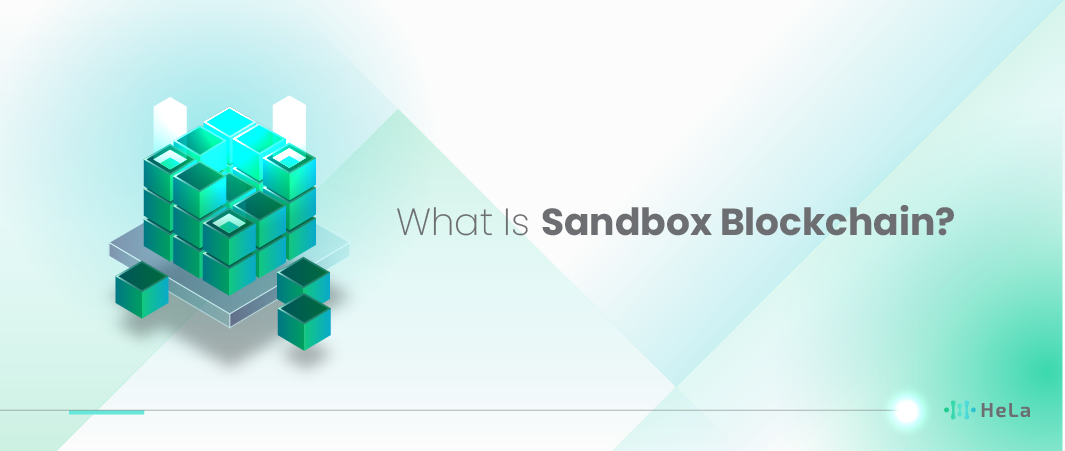The term “blockchain” has permeated nearly every industry, bringing with it a wave of innovation, especially in digital ownership and decentralized systems. In the realm of gaming and virtual worlds, one particular blockchain platform stands out: Sandbox. This article delves into what Sandbox Blockchain is, its distinctive features, and its impact on the gaming industry and beyond. As we unpack the layers of this digital phenomenon, we aim to provide a clear and straightforward understanding of its mechanics and benefits.
Sandbox Blockchain serves as a foundational technology for a virtual world where users can create, build, buy, and sell digital assets in the form of a game. By leveraging the power of decentralized ledger technology, Sandbox offers a secure and user-driven environment where every transaction is transparent and immutable. This environment not only enhances security but also fosters a community-driven approach to content and asset creation.
Understanding Sandbox requires a grasp of its underlying principles and the overall ecosystem. In this article, we’ll explore the core components that make Sandbox a leading platform in blockchain-based gaming. We’ll discuss its functionality, the opportunities it presents for users, and its potential future developments. Join us as we explore the intricate world of Sandbox Blockchain, simplifying complex ideas into easy-to-understand concepts.
What Is Sandbox Blockchain?
The Sandbox blockchain is essentially a virtual world running on the Ethereum network, which allows users to create, own, and monetize their gaming experiences using the platform’s native cryptocurrency, SAND. It’s part of the broader trend of blockchain-based “play-to-earn” models in gaming, where players can earn real-world value through in-game activities.
In The Sandbox, participants can purchase virtual land and other assets as Non-Fungible Tokens (NFTs), which are unique digital tokens that signify ownership and can be bought, sold, or traded. This introduces a new layer of ownership and economic opportunity within the digital space, allowing creators to benefit directly from the value they create. These assets can be used to build experiences, games, or even dynamic 3D worlds that other users can explore and interact with.
Also Read: Crypto Payment: Its Impact on Global Finance
The platform includes tools that democratize game design, enabling even those without advanced coding skills to participate in creating and animating objects. For instance, its VoxEdit software allows users to craft and animate 3D objects that can be sold on The Sandbox Marketplace. Similarly, the Game Maker tool enables users to build interactive games without any programming knowledge.
The Sandbox also fosters a decentralized governance structure through a Decentralized Autonomous Organization (DAO), where SAND holders can participate in governance decisions, influencing the platform’s future direction and updates. This approach promotes community involvement and decision-making, reflecting a shift towards more democratic and user-centered models in digital environments.
What Makes Sandbox Blockchain Unique?
The Sandbox is a virtual world where players can build, own, and monetize their gaming experiences using the Ethereum blockchain platform. It leverages the power of decentralized finance (DeFi) and non-fungible tokens (NFTs) to create a unique economy where users can earn real-world value through their virtual creations and interactions. Here are the core features of the Sandbox Blockchain:
1. User-Generated Content (UGC)
The Sandbox heavily emphasizes user-generated content, allowing users to create their own games, assets, and experiences within the virtual world. This is facilitated by tools like VoxEdit for creating voxel-based assets (similar to pixels but in 3D) and Game Maker for building interactive games without needing to code.
2. Decentralized Ownership
Using NFTs, the Sandbox allows users to have true ownership over their creations. These assets are verified on the Ethereum blockchain, making them unique and tradable on the Sandbox Marketplace or other NFT platforms. This ownership extends to virtual land in the Sandbox metaverse, which can be bought, sold, or used to host games and experiences.
3. Play-to-Earn Model
The Sandbox introduces a play-to-earn model, where players can earn the platform’s native cryptocurrency, SAND, through gameplay, content creation, and participation in various ecosystem activities. SAND can be used for transactions, staking, and governance, giving players a stake in the platform’s development.
4. Interoperability
Assets created in The Sandbox can be used across different games and experiences within the platform, providing a seamless and integrated ecosystem. This interoperability is a significant part of why the Sandbox is appealing to developers and creators, as it allows for diverse and dynamic use cases.
5. Decentralized Governance
The Sandbox features a decentralized autonomous organization (DAO), where SAND holders can vote on key decisions affecting the platform. This democratic approach to governance empowers users and aligns with the decentralized ethos of blockchain technology.
Benefits to Users
- Creativity and Monetization: Users can create assets and experiences, which they can monetize by selling or using in games. This opens up opportunities for creators to earn from their creativity in a virtual economy.
- Security and Transparency: Transactions and ownership details are secured by blockchain, providing transparency and reducing the risk of fraud.
- Community and Collaboration: The platform supports a thriving community where users can collaborate, share resources, and enhance their creations collectively.
Challenges and Considerations
Despite its innovative approach, The Sandbox faces challenges typical of blockchain-based platforms, such as scalability issues due to Ethereum’s current transaction limits and high gas fees, which can affect the cost-effectiveness of transactions within the platform. There are also considerations around the digital divide, as access to such platforms requires certain technological literacy and equipment.
Overall, The Sandbox represents a significant shift in how games and virtual platforms can function, offering a decentralized, user-driven economy where the line between creator and consumer is blurred, enhancing the interaction and profitability of digital and creative endeavors in the virtual space.
How Sandbox Blockchain Is Changing the Gaming Industry

The Sandbox blockchain is significantly influencing the gaming industry by introducing new economic and creative dimensions to gaming. This platform operates on a decentralized system where the assets created and owned by players—like land, characters, and other items—are represented as non-fungible tokens (NFTs). This allows for verifiable ownership and the potential for assets to appreciate in value, which is a departure from traditional gaming models where all assets remain under the control of the game developer.
Redefining User Interaction
The Sandbox empowers players by enabling them to truly own, create, and monetize their in-game assets. This shifts the role of players from mere consumers to active creators and stakeholders. For instance, players can design and build unique experiences on their virtual land and charge others for access, or create and sell game assets like outfits and tools.
Economic Model
The economic model of The Sandbox is built around the use of a cryptocurrency called SAND, which is used to facilitate transactions within the platform. Players can use SAND to purchase land or assets, pay for services, or stake it to participate in governance decisions through a decentralized autonomous organization (DAO). This economic model not only incentivizes player participation and investment but also fosters a micro-economy within the game itself.
Implications for Developers and Players
For game developers, The Sandbox offers a new paradigm where they can benefit from an active marketplace and a community-driven approach to game development. Developers can create assets and experiences that can be monetized directly within the ecosystem. Additionally, as the platform is built on open-source technology, it offers transparency and the potential for collaborative development.
For players, the implications are profound as well. They can derive real-world economic benefits from their gaming activities, potentially transforming gaming from a hobby into a source of income. This model also enhances player engagement and loyalty as their investments in the game have tangible value and can grow over time.
Broader Industry Impact
The Sandbox model challenges traditional gaming economics by decentralizing control and profits. It can potentially reduce barriers to entry for independent developers, allowing more diverse and innovative games to come to market. Moreover, by using blockchain technology, it ensures that transactions are secure and transparent, which could address some of the trust and security concerns prevalent in online communities.
The integration of blockchain technology into gaming via platforms like The Sandbox could herald a new era in the industry, characterized by a shift towards digital ownership, player-driven economies, and a more inclusive approach to game development and monetization.
Exploring the Sandbox Ecosystem

The Sandbox ecosystem is an expansive, user-centric platform that leverages blockchain technology to empower creators and players, creating a decentralized virtual world. Here’s a detailed look at its key components and their interplay:
- VoxEdit: This is a versatile 3D voxel art and animation software that enables users to design and animate objects, characters, and other assets. VoxEdit is particularly significant because it allows creators, even those with minimal technical skills, to contribute to the ecosystem. Once created, these assets can be exported to the Sandbox Marketplace as non-fungible tokens (NFTs), making them unique and tradeable.
- Marketplace: Serving as the trading hub within the Sandbox ecosystem, the Marketplace allows users to buy, sell, or trade assets they or others have created using VoxEdit. Each asset is tokenized as an NFT, ensuring ownership and originality are preserved. This not only helps creators monetize their work but also facilitates a vibrant economy within the Sandbox where assets gain value based on rarity, utility, and demand.
- Game Maker: Perhaps the most dynamic component, the Game Maker enables users to construct interactive experiences using the assets created in VoxEdit. Without the need for coding skills, users can build games or social hubs which can be monetized or simply enjoyed by the community. This tool democratizes game development, offering a platform where creativity rather than technical ability dictates a user’s success.
- SAND Token: SAND is the native cryptocurrency and utility token of the Sandbox platform. It is used for every transaction within the ecosystem, including purchasing assets, playing games, and claiming rewards. Holding SAND also gives stakeholders governance rights, allowing them to participate in decisions regarding the platform’s development and future initiatives through a decentralized autonomous organization (DAO).
The synergy between these components fosters a thriving digital economy and an engaging virtual world. The ecosystem not only promotes creativity and collaboration but also provides economic opportunities through the use of blockchain and NFT technologies. This makes The Sandbox a prime example of how modern technology can create new forms of entertainment and business.
Sandbox Blockchain and Digital Ownership

The Sandbox platform leverages blockchain technology to facilitate digital ownership in a virtual world where users can create, own, and monetize their digital assets and gaming experiences. This approach represents a shift in how digital content is managed and monetized, providing creators and players with unprecedented control and security over their digital properties.
Understanding Digital Ownership in The Sandbox
Digital ownership in The Sandbox means that when users create or purchase digital assets—like virtual land, avatars, or in-game items—these assets are truly theirs, recorded as unique tokens on the blockchain. This technology ensures that ownership is transparent and immutable, making it nearly impossible for assets to be duplicated or stolen without permission.
How Blockchain Enhances Security
Blockchain is central to The Sandbox’s security model. Each transaction on The Sandbox platform is recorded on a decentralized ledger, ensuring that all exchanges of assets are traceable and verifiable. This prevents fraud and unauthorized duplication. Furthermore, because the blockchain is decentralized, it is not controlled by any single entity, which reduces the risk of censorship or manipulation.
User Rights and Control
One of the significant implications of blockchain-based digital ownership is the enhanced user rights it provides. Users have the freedom to use, sell, or license their digital assets as they see fit, without interference from the platform or other third parties. This can empower creators by enabling them to monetize their creations directly.
Also Read: 5 Strategies for Crypto Bear Market Investors
Economic Implications
The economic model of The Sandbox also promotes a circular economy where users can earn the platform’s cryptocurrency by participating in various activities or creating content that others value. This system encourages a vibrant marketplace where assets can be traded and valued based on their rarity and utility.
Future Perspectives
As digital ownership continues to evolve, platforms like The Sandbox could profoundly impact how intellectual property rights are perceived and enforced in the digital realm. This could lead to new legal frameworks and regulatory standards that protect users while fostering innovation and economic activity within these virtual spaces.
The concept of digital ownership facilitated by blockchain technology in The Sandbox represents a significant step forward in how we perceive and interact with virtual assets, reshaping the landscape of digital rights and economic opportunities in the process.
Conclusion
Sandbox Blockchain stands at the forefront of the intersection between blockchain technology and the gaming industry, providing a platform where creativity and economy converge. It offers an innovative approach to digital ownership and user engagement, empowering users to shape their virtual experience. As Sandbox continues to evolve, it may well set the standard for future blockchain applications in gaming and beyond.
The potential of Sandbox to influence other industries is vast, paving the way for new applications of blockchain technology. Its focus on community involvement, security, and innovation makes it an exciting prospect for anyone interested in the future of digital interaction.
In summary, Sandbox Blockchain is more than just a gaming platform. It is a visionary project that harnesses the power of blockchain to create a decentralized, user-powered ecosystem. Its continued development and adoption will undoubtedly provide valuable insights into the capabilities of blockchain technology, making it a key player in the digital world.
Disclaimer: The information provided by HeLa Labs in this article is intended for general informational purposes and does not reflect the company’s opinion. It is not intended as investment advice or recommendations. Readers are strongly advised to conduct their own thorough research and consult with a qualified financial advisor before making any financial decisions.

Joshua Soriano
I am a writer specializing in decentralized systems, digital assets, and Web3 innovation. I develop research-driven explainers, case studies, and thought leadership that connect blockchain infrastructure, smart contract design, and tokenization models to real-world outcomes.
My work focuses on translating complex technical concepts into clear, actionable narratives for builders, businesses, and investors, highlighting transparency, security, and operational efficiency. Each piece blends primary-source research, protocol documentation, and practitioner insights to surface what matters for adoption and risk reduction, helping teams make informed decisions with precise, accessible content.
- Joshua Soriano#molongui-disabled-link
- Joshua Soriano#molongui-disabled-link
- Joshua Soriano#molongui-disabled-link
- Joshua Soriano#molongui-disabled-link

